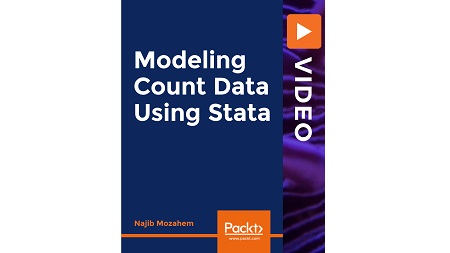
English | MP4 | AVC 1920×1080 | AAC 44KHz 2ch | 4h 40m | 1.25 GB
Learn Poisson and negative binomial regression techniques
The course is divided into two parts. In the first part, you’ll be introduced to the theory behind count models in an intuitive way while keeping the math at a minimum. The course starts with an overview of count tables, where you’ll learn how to calculate the incidence rate ratio. You’ll get to grips with Poisson regression and understand how to work with continuous, binary, and categorical variables. As you advance, you’ll explore the concept of overdispersion and how to address this issue using negative binomial models. The course also covers other count models such as truncated models and zero-inflated models.
In the second part of the course, you’ll be able to apply what you have learned using Stata. You’ll be taken through a large project where you’ll fit the Poisson, negative binomial, and zero-inflated models. Additionally, you’ll discover the tools used to compare these models.
Learn
- Calculate incidence rate ratios
- Identify when to use count models
- Apply count models using Stata
- Predict the expected number of outcomes
- Compare different models
- Understand what count models are
Table of Contents
01 Introduction
02 Count tables
03 Risk
04 Inceidence-rate ratio
05 Two-by-three tables
06 Single independent variable
07 Examples
08 Binary variables
09 Multiple independent variables
10 Categorical variables
11 Exposure
12 Negative binomial regression
13 Truncated models
14 Zero-inflated models
15 Comparison of models
16 Predicting the number of events
17 Predicting probabilities of certain counts
18 Introduction to the dataset
19 Continuous variables
20 Binary variables
21 Multivariate analysis
22 Negative binomial regression
23 Zero-inflated models
24 Comparing count models
25 Model interpretation – predicted number of events
26 Model interpretation – predicted probabilities of different outcomes
27 Visualizing the model – predicted number of events
28 Visualizing the model – predicted probabilities of different outcomes
29 Conclusion
Resolve the captcha to access the links!